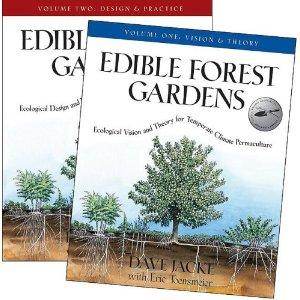posted 10 years ago
Ok gang, here's a four thoughts on the opening chapters. What did you think?
The 7 fs (p1) adds an additional axis in the matrix, along with zone, the 7 layers concept, and my mental axis of pollinator/dynamic accumulator/nitrogen-fixer/etc., for plant selection. Our gardens have focused on food, fodder and fertilizer, right now I am feeling the lack of "emphasis on farmaceuticals" and fun, especially. These are areas to focus on as I add additional layers of plants.
I love the unabashed use of the word gardening. It's a broader definition, for sure, but there is no shame in using the word to describe the tending of a plot of plantings. We should take back the word, it doesn't have to mean tilling, row crops and bottles of chemicals. It will mean plant propagation, weeding, watering, and nurturing.
"Those of you in drier climates, such as the prairies and the desert Southwest, can grow forest gardens too, if you provide irrigation and wind protection. You should, however, look to your native habitats as models for sustainable agriculture." (p3)
My take on this, in an desert steppe climate, has been that looking beyond the eastern temperate forests to other models is critical, but not to constrain myself to our immediate region. 19th century grazing practices and at least 4 centuries of population disruption due to Spanish/Mexcian/native slave trade have rendered the local history uninterpretable. But there are other models—Khazakstan is an area that we are studying as an analog to our climate. Broad-minded exploration has yielded some interesting ideas for plant guilds.
The Burden of the Intervenor-what an important concept (p21). I sometimes despair that there is the fantasy amongst our tribe of plant it and forget it until you want its yields. I think we can strive for self-maintaining landscapes, but that we need to prepare for a long haul if we get there at all. I know on our land the rehab work is not for the faint-of-heart. And I have no control, only the power of positive influence, on what happens at the boundaries of my land that will leak over to slow healing. Not only do we bear the burden of our own interventions, but the unshouldered burden of those who came before. Assuming that they were doing the best they could with the information they had at the time (which I believe was the case for the pre-WWII generation of subsistence pioneers, less so on our little parcel for the last 30 years or so), the unintended consequences are staggeringly complicated to repair.

 2
2






 4
4




 4
4




 1
1











 1
1




 1
1












 1
1




 1
1




 2
2





 2
2



















